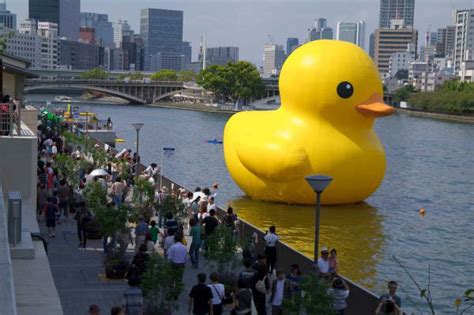
Everyday objects, from pencils to paperclips, take on a surreal quality when dramatically enlarged, transforming the mundane into the monumental and sparking curiosity about scale and perception. The internet is replete with images showcasing these oversized items, captivating viewers with the unexpected juxtaposition of familiarity and immense size.
The human fascination with scale distortions is nothing new. From roadside attractions featuring colossal statues to artists manipulating perspective to create illusions, people have long been intrigued by seeing familiar objects in unfamiliar sizes. This fascination taps into a primal sense of wonder and challenges our understanding of the world around us. The impact of encountering a vastly oversized version of something we use daily is multi-faceted, prompting questions about manufacturing, practicality, and the sheer novelty of the altered scale.
These supersized objects, often displayed in public spaces or shared online, serve as both artistic statements and whimsical spectacles. They invite viewers to reconsider their relationship with the everyday and to appreciate the design and functionality of objects often taken for granted. The appeal extends beyond mere visual amusement, delving into psychological and philosophical realms. What does it mean for something to be “normal” sized? How does changing the scale alter our perception of its purpose? These are the questions that arise when confronted with the extraordinary sight of everyday items rendered gigantic.
The trend also reflects a broader cultural interest in the unusual and the extreme. In a world saturated with information, these oversized objects cut through the noise, demanding attention and sparking conversation. They are visual reminders of the boundless creativity and the human impulse to reimagine the world in new and unexpected ways.
The Oversized Examples
The internet is awash with examples of these oversized everyday objects. Here are some notable examples:
-
Giant Paperclip: A seemingly simple office supply, the paperclip, becomes an imposing structure when enlarged. Its function, typically to hold papers together, is rendered absurd at this scale, forcing viewers to contemplate the object’s inherent design and purpose.
-
Oversized Pencil: The humble pencil, a tool for writing and drawing, transforms into a sculptural piece when supersized. Its familiar hexagonal shape and graphite core take on new significance, highlighting the object’s role in communication and creativity.
-
Enormous Comb: A personal grooming tool, the comb, becomes a comical and slightly unsettling sight when enlarged. Its teeth, designed to detangle hair, now appear as formidable prongs, altering the viewer’s perception of its function.
-
Massive Safety Pin: A common fastener, the safety pin, becomes a bold statement piece when scaled up. Its simple yet ingenious design is amplified, emphasizing its role in holding things together, both literally and metaphorically.
-
Humongous Push Pin: Usually a small, almost unnoticeable item, the push pin becomes a prominent fixture when enlarged. Its sharp point and plastic head now command attention, prompting consideration of its purpose in securing and displaying information.
-
Colossal Coffee Cup: A symbol of daily routine and caffeinated energy, the coffee cup takes on a monumental presence when supersized. Its familiar form becomes a visual metaphor for the pervasive role of coffee in modern life.
-
Giant Crayon: A childhood staple for artistic expression, the crayon becomes a vibrant and playful sculpture when enlarged. Its waxy texture and bright colors are amplified, evoking feelings of nostalgia and creativity.
-
Enormous Matchstick: A source of ignition and potential danger, the matchstick becomes a dramatic object when scaled up. Its flammable tip and wooden body now possess a heightened sense of risk and power.
-
Massive Ruler: A tool for measuring and precision, the ruler becomes an imposing instrument when enlarged. Its markings and straight edge now convey a sense of authority and control.
-
Humongous Eraser: Designed to correct mistakes, the eraser becomes a symbolic object when supersized. Its ability to remove and revise takes on a new significance, representing the human capacity for learning and growth.
-
Colossal Bottle Cap: Often overlooked and discarded, the bottle cap becomes a visually striking element when enlarged. Its simple design and utilitarian function are elevated, prompting appreciation for the details of everyday objects.
-
Giant Thumbtack: Similar to the push pin, the thumbtack gains prominence and visual impact when enlarged. Its sharp point and metallic head now command attention, emphasizing its role in securing and displaying items.
-
Oversized Bobby Pin: A hair styling tool, the bobby pin’s functionality is transformed when it’s enlarged. It becomes impractical and more of an art piece, highlighting the intricacies of everyday beauty routines.
-
Enormous Can Opener: A kitchen tool taken for granted, the can opener becomes a curious object when oversized. Its complex mechanism and utilitarian purpose are amplified, drawing attention to its ingenuity.
-
Massive Rubber Band: Symbolizing elasticity and binding, the rubber band transforms when enlarged. Its ability to stretch and hold takes on a visual representation of resilience and adaptability.
-
Humongous Highlighter: Highlighting information, the highlighter becomes a bold statement piece when scaled up. It signifies emphasis and importance, drawing attention to the act of selecting and prioritizing information.
-
Colossal Stapler: A desk staple (literally), the stapler becomes an imposing machine when enlarged. Its function of binding documents together is emphasized, highlighting the importance of organization and efficiency.
-
Giant Toothbrush: A personal hygiene item, the toothbrush transforms into a somewhat comical and slightly unsettling object when supersized. Its bristles now appear as formidable cleaning agents, altering the viewer’s perception of its purpose.
-
Oversized Lightbulb: A symbol of innovation and illumination, the lightbulb takes on a monumental presence when enlarged. Its familiar form becomes a visual metaphor for ideas and enlightenment.
Psychological Impact of Scale
The human brain is wired to perceive and interpret scale. When confronted with objects that defy our expectations, it triggers a cascade of cognitive processes. Our initial reaction is often surprise, followed by an attempt to reconcile the perceived size with our existing knowledge of the object. This process involves comparing the oversized object to its typical counterpart, evaluating its proportions, and assessing its potential function.
The experience can be both stimulating and disorienting. The novelty of seeing a familiar object in an unfamiliar scale can spark curiosity and encourage creative thinking. It can also challenge our assumptions about the object’s purpose and value. For example, an oversized pencil might prompt us to reconsider the role of writing and drawing in our lives, while an enormous paperclip might make us question the importance of organization and efficiency.
Furthermore, the act of encountering these oversized objects can evoke feelings of wonder and awe. The sheer size of the objects can make us feel small and insignificant, reminding us of the vastness of the world and the power of human imagination. This experience can be particularly impactful in public spaces, where these oversized objects can transform the environment and create a sense of playfulness and surprise.
Artistic and Cultural Significance
Beyond their psychological impact, these oversized objects also hold artistic and cultural significance. They can be seen as examples of pop art, a movement that celebrates the everyday and the mundane. By elevating ordinary objects to monumental status, artists can challenge our perceptions and encourage us to see the world in new ways.
Moreover, these oversized objects can serve as social commentary. They can be used to critique consumerism, to satirize societal norms, or to raise awareness about environmental issues. For example, an oversized plastic bottle might be used to highlight the problem of plastic waste, while an enormous cigarette butt might be used to discourage smoking.
The trend of creating oversized objects also reflects a broader cultural interest in the unusual and the extreme. In a world saturated with information and entertainment, people are constantly seeking out new and exciting experiences. These oversized objects offer a visual spectacle that is both memorable and thought-provoking. They provide a break from the ordinary and invite us to engage with the world in a playful and imaginative way.
Manufacturing and Logistics
Creating these oversized objects is no small feat. It requires careful planning, specialized materials, and advanced manufacturing techniques. The process often begins with a digital model of the object, which is then scaled up and translated into a physical form.
Depending on the size and complexity of the object, different manufacturing methods may be used. Some objects are constructed from lightweight materials such as fiberglass or foam, while others are made from more durable materials such as steel or concrete. The choice of material depends on the intended use of the object, its structural requirements, and its aesthetic qualities.
Transporting and installing these oversized objects can also be a logistical challenge. Special equipment and permits may be required to move the objects from the manufacturing site to their final destination. Once on site, the objects must be carefully installed to ensure their stability and safety.
The Future of Oversized Objects
The trend of creating oversized objects shows no signs of slowing down. As technology advances and manufacturing techniques improve, we can expect to see even more creative and innovative examples of this art form.
In the future, oversized objects may become even more interactive and engaging. They may incorporate sensors, lights, and sound effects to create immersive experiences for viewers. They may also be used to promote education and awareness, by providing interactive displays that teach people about science, history, or art.
Furthermore, oversized objects may play a role in urban planning and development. They can be used to create landmarks, to define public spaces, or to enhance the aesthetic appeal of cities. They can also be used to promote tourism and attract visitors to specific locations.
Ultimately, the future of oversized objects is limited only by the imagination. As long as people continue to be fascinated by scale and perception, there will be a demand for these extraordinary creations. They serve as a reminder that the world is full of surprises and that even the most mundane objects can be transformed into something extraordinary. They capture attention, provoke thought, and inject a sense of whimsy into the everyday.
FAQ: Giant Everyday Objects
1. Why are people so fascinated by oversized versions of everyday objects?
People are fascinated by oversized versions of everyday objects because they disrupt our normal perception of scale and familiarity. This disruption triggers a sense of surprise and wonder, prompting us to reconsider the object’s design, purpose, and our relationship with it. As stated earlier, it “taps into a primal sense of wonder and challenges our understanding of the world around us.” The novelty and the unexpected nature of these objects make them visually appealing and thought-provoking.
2. What are some common examples of everyday objects that are often made oversized?
Some common examples include office supplies like paperclips, pencils, push pins, and staplers; personal care items like toothbrushes and combs; kitchen tools like can openers; and general household items like rubber bands, bottle caps, and lightbulbs. The appeal lies in taking something mundane and transforming it into a monumental spectacle.
3. What is the artistic or cultural significance of creating these oversized objects?
The creation of oversized objects often falls under the umbrella of pop art, which celebrates the everyday and the mundane. These objects can serve as social commentary, critique consumerism, satirize societal norms, or raise awareness about environmental issues. They also reflect a broader cultural interest in the unusual and extreme, providing a visual spectacle that is both memorable and thought-provoking. As a quote from the original article mentions, it “is a visual reminder of the boundless creativity and the human impulse to reimagine the world in new and unexpected ways.”
4. What are the challenges involved in manufacturing and transporting these giant objects?
Manufacturing oversized objects requires careful planning, specialized materials, and advanced manufacturing techniques. Depending on the size and complexity, different methods are used, such as fiberglass, foam, steel, or concrete. Transporting these objects presents logistical challenges, often requiring special equipment and permits. Installation must be carefully executed to ensure stability and safety.
5. How might oversized objects be used in the future?
Oversized objects could become more interactive and engaging by incorporating sensors, lights, and sound effects. They could be used in educational displays, urban planning, and to enhance the aesthetic appeal of cities, promoting tourism and attracting visitors. The possibilities are limited only by imagination, offering potential in art, entertainment, and practical applications.
In summary: The appeal of oversized everyday objects lies in their ability to transform the ordinary into the extraordinary, sparking curiosity, challenging perceptions, and injecting a sense of whimsy into our daily lives. From giant paperclips to colossal coffee cups, these monumental creations capture our attention and invite us to reimagine the world in new and unexpected ways.









